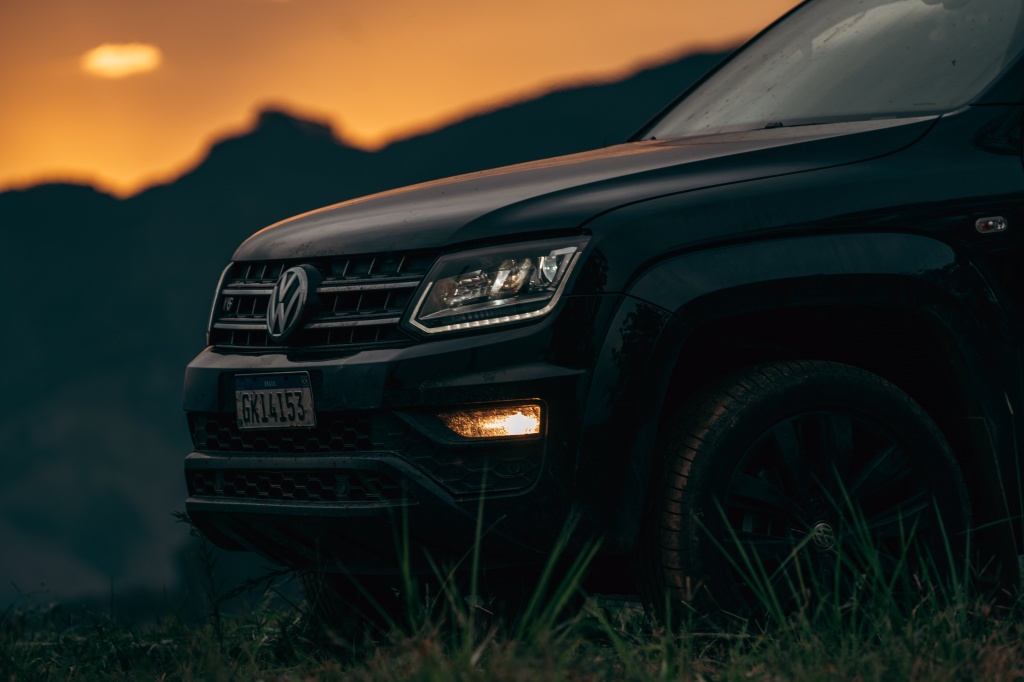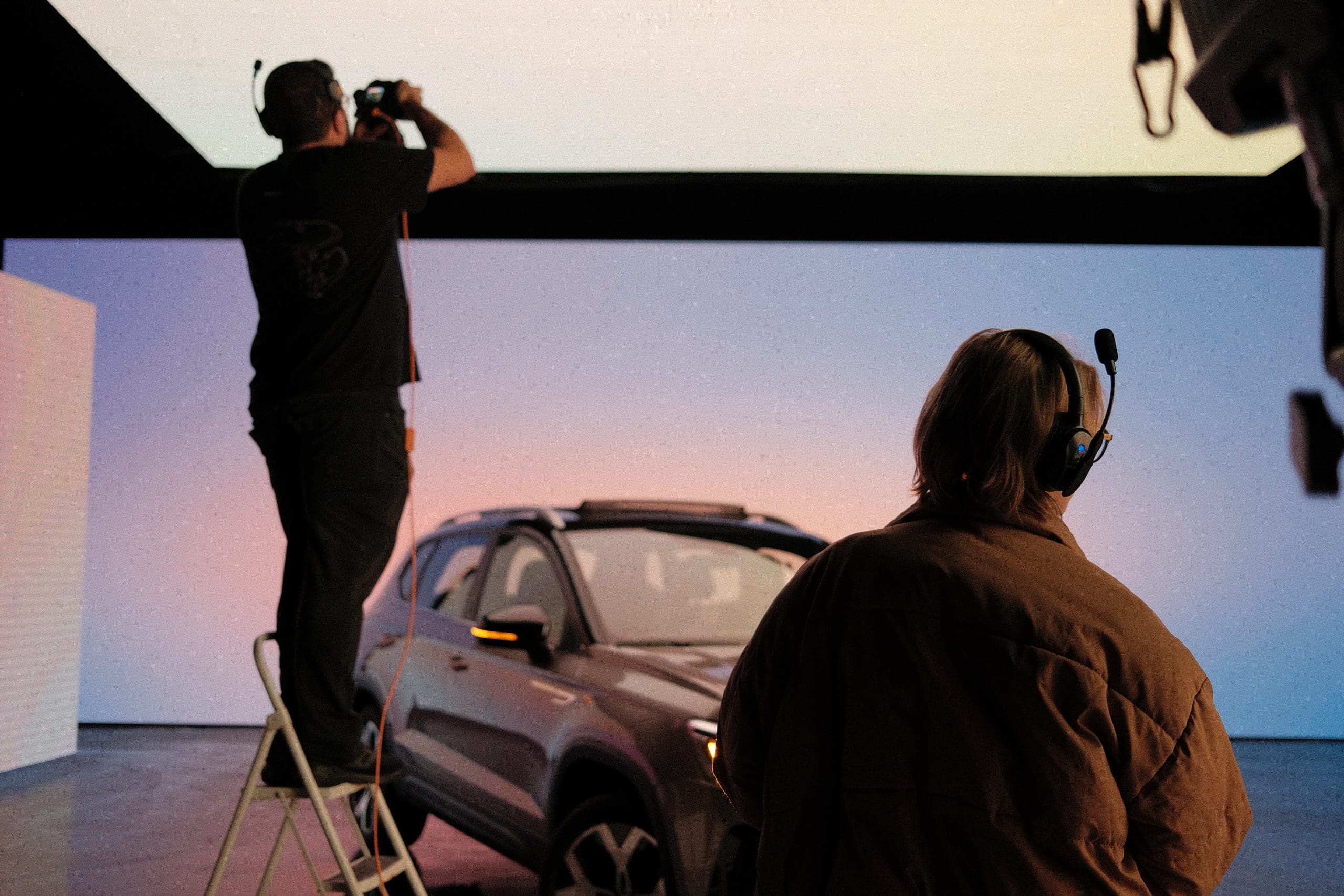
Car photography is a niche that requires a combination of technical knowledge, artistic vision, and the right equipment.
Whether you’re photographing the essence of a vintage automobile, a racing car, or an urban vehicle, your photoshoot should convey the distinctive qualities and “spirit” of the car.
A car photoshoot is perfect for highlighting the product’s captivating design, as well as showcasing the car’s unique features.
On top of all this, car photoshoots allow you to charge a higher price, as the product being photographed has a high added value.
But the question is: how do you really prepare and organize for a car photoshoot and deliver quality work at the end of it all?
Over the years of photographing cars for international brands, what I’ve learned is that to deliver an incredible job, the most important thing is to have a well-organized pre-production.
And that’s what we’re going to focus on in today’s article: how to organize your pre-production. Let’s get started!
How to Pre-Produce For a Car Photoshoot
I’m going to describe some of the steps my team and I take when structuring a car shoot. By following these steps, we can make everything easier for D-day.
Understand Your Target Audience

It’s very important that you have a clear understanding of who the target audience is for the car you are photographing.
Is the car an SUV? Is it a comfortable family car? Is it a car for adventurous people? Know who the car is for, because it’s based on the target audience that you will structure the rest of the pre-production.
So, when you have your first meeting with the team that hired you, put all the questions on the table. Don’t be left with any doubts, because the more clarity you have, the better your pre-production will be.
Define the Location

This can be the hardest part of the job, because the location is what will dictate the feeling that the photo will convey.
You want a place that is beautiful, clean, and easy to work with, with free access to work and move around with the car, in case you need to repeat takes and compositions without disturbing the flow of what’s around (traffic and people).
Also, bear in mind that the car is a stationary object. It won’t pose, it won’t jump, it doesn’t have a better side to photograph.
So it’s with a “perfect” location that you’ll be able to show the beauty of the car, with the composition of (or juxtaposition between) car and environment.
Casting

As important as it is to take pack-shot photos of the car and its details, humanizing the campaign is crucial, especially in this day and age.
It’s not just about matching the car to the environment, but also about showing people interacting with the vehicle.
Remember how the first point of this article was to understand who your target audience is? Now it comes in handy.
If the car is family-oriented, cast two adults and children and have them act as a family around the car, interacting with the car as if they were getting ready to go on a trip or going to school or work.
If it’s a fancier car, how about selecting people who look like businessmen or businesswomen who will give the impression that they are important at work?
How Much Do You REALLY Know About Photography?! 🤔
Test your photography knowledge with this quick quiz!
See how much you really know about photography…

If it’s an off-road car, how about selecting a rural worker or a young person who conveys a sense of freedom?
When I talk about casting, I want to remember that costumes are also important in this part, so matching people and wardrobe is part of the idealization of the project.

So far we’ve talked about three points of pre-production that are interconnected. That’s why it’s important to make this part of the project very detailed, so that each point gets easier.
But let’s keep going, because we still have other points to cover…
Understand The Size of The Structure You Will Need

Knowing the size of your production is essential. I’m talking about equipment, people, and locations. And this will depend on the budget you have.
There’s no point in thinking about making a Hollywood-sized production to show the car in action if your budget is only enough for your daily rate for one day’s location and casting.
Be aware of what you can deliver and what you’ve been hired to do. And be creative with what you have. That way you’ll know how you’re going to work, with how many people and how much time you’ll have to do it all.
One tip I always give is to use a large butterfly, 3m x 3m or 4m x 4m, so you can soften very harsh shadows from direct light or a sunny day.
That way, you won’t waste time standing still because of bad light. If shooting outdoors, watch out for wind.
Always try to have a team to help you, even if it’s a small one, so that you don’t do everything yourself. The environment you’ll be working in may require agility in some situations and you may not be able to cope on your own.
Make a Shot List

Make a list of photos of what you want and what the client needs.
This shot list will help you understand what is important to the client, such as details of the car that are differentiating and can impress the target audience.
Take the HARD Photography Quiz! 🤯
Now it’s time to really test your photography knowledge!
(99% of people can’t get all the questions right…)

It could be a different air conditioning system, a more technological on-board computer, a reversing camera, etc.
On this list, as well as putting in the ideas the client wants, add your photo ideas, too.
By following this schedule, you’ll be able to keep track of what has already been done and what needs to be photographed.

One tip for creating your shot list is to look for references.
You can look at the official profiles of brands, both in your country and in other countries (because brands can often have different ideas for different countries).
Another idea is to look for references on Google Images and Pinterest.
Once you’re done with your official shot list, you can go crazy and take different photos that you thought of but didn’t make it into the brief.
Organize Your Day
The day of the shoot has arrived, and at this point, you need to have everything organized so that you don’t waste any time and, if something unexpected happens, you have free time to work around it.
Make sure you arrive at the shooting location in advance so that you can make any necessary changes/adjustments, such as cleaning the car, adjusting the light, analyzing the location, and thinking of more angles that might make sense for the job.
One tip I have for you is what I use… the 20-60-20 rule.
The first 20% of the time, I do the more traditional shots, the ones that can’t be missed and that have already been idealized by the client: packshot, 3/4 shot, 1/4 shot, showing the design of the car and the details.
Then, I spend 60% of the time doing the shot list I’ve created with the casting, such as people interacting with the car, using the trunk, using the reverse sensor, opening the door, driving, and using the onboard computer.
The last 20% of the time I leave free for my creativity to speak for itself… in other words, I go crazy! I use it for panning, light painting, wide angles and tilted horizons, and other ideas that I think might look good.
That’s why it’s important to organize the day of the shoot so that the schedule is followed and you don’t have an unforeseen event that you can’t get around.
Conclusion

In this article, we talked about how to prepare for a car shoot, focusing on pre-production, which is where all the hard work takes place.
Of course, on the day of the shoot, you’ll have to put your skills as a photographer to the test and read the environment to create the best compositions.
Another tip I’d give you is to take advantage of the different millimeter lenses you have to create different perspectives.
By working through each step we’ve discussed here in detail, and selecting the appropriate style for each project, you can present the car in the most favorable light and capture captivating images that really embody its essence.
Whether you’re an experienced photographer or an enthusiast with a passion for capturing cars, having a comprehensive understanding of car photoshoots is essential to achieving professional-level results.
Highly Recommended


Check out these 8 essential tools to help you succeed as a professional photographer.
Includes limited-time discounts.
Learn more here
Credit : Source Post



